Menu
Port wine stains, also called capillary malformations, are vascular birthmarks appearing as pink, red, or purple patches on the skin. Often referred to as “stork bites” in infants, lighter marks may fade in early childhood, but most persist for life. While generally harmless, some individuals seek port wine birthmark removal due to cosmetic concerns or psychological impact.
Pulsed dye laser treatment is the leading method for effectively reducing or eliminating port wine stains, offering hope to those seeking to lessen their appearance and improve confidence.
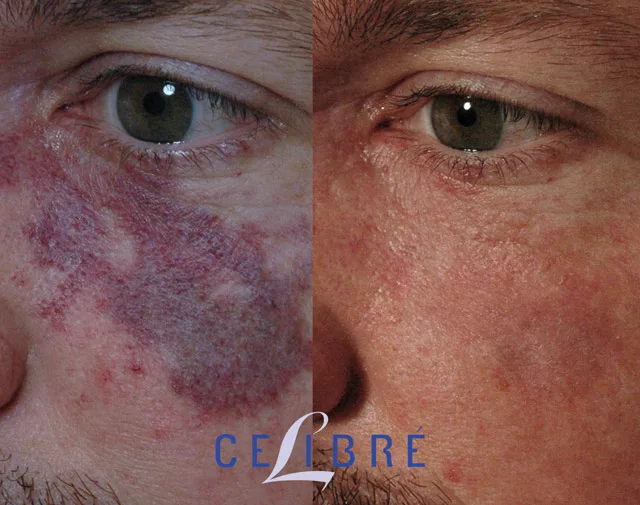
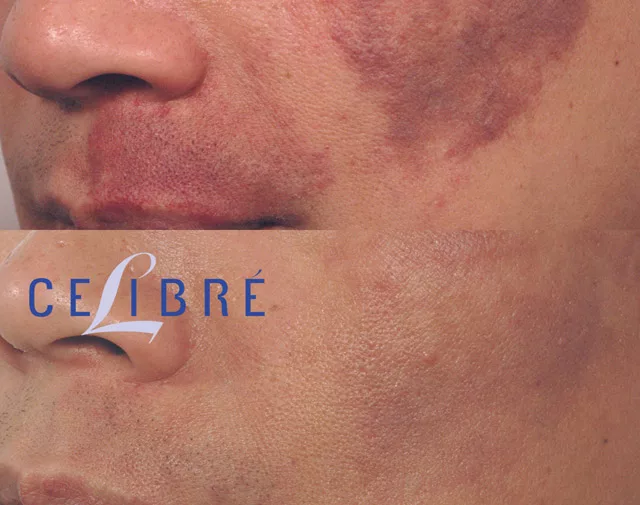
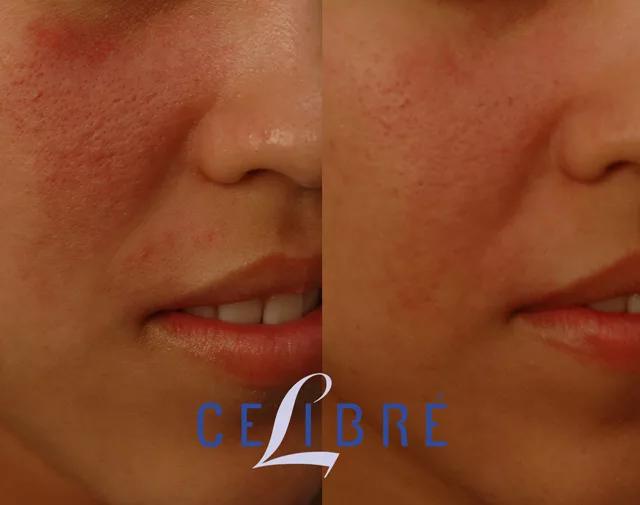
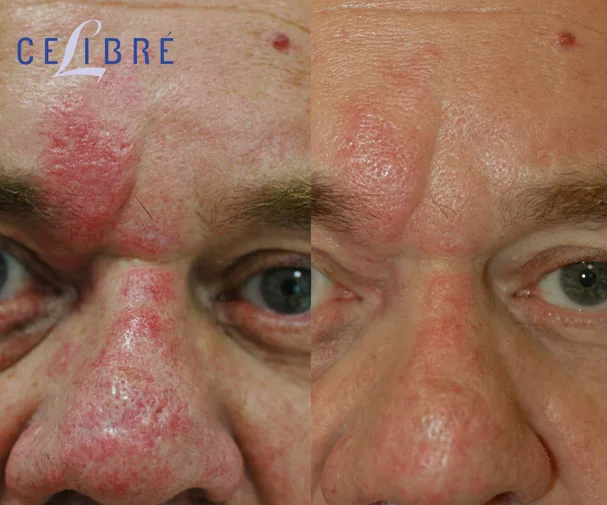
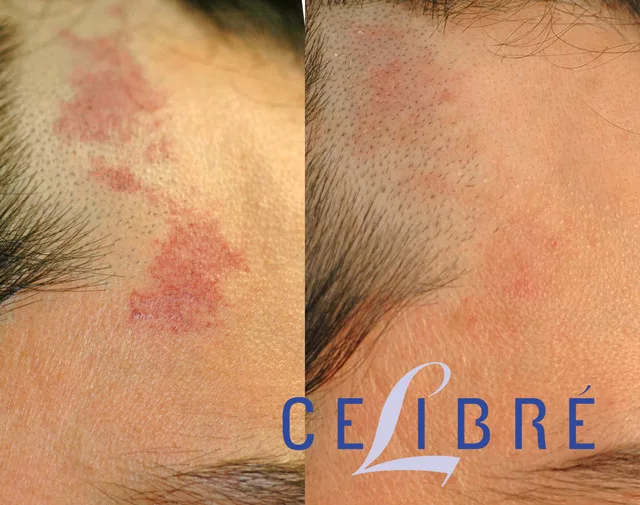
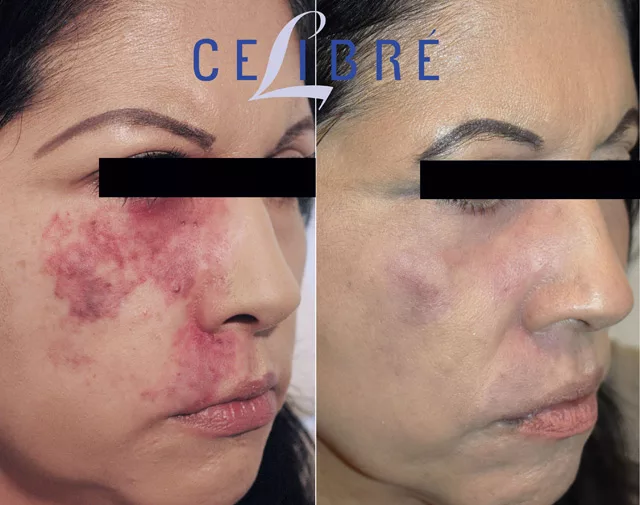
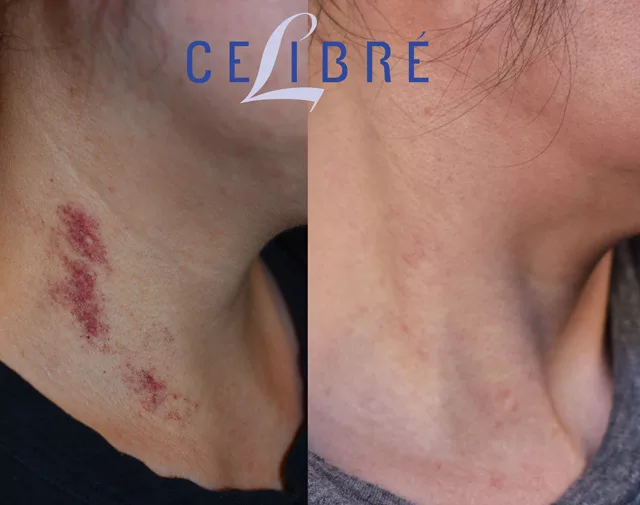
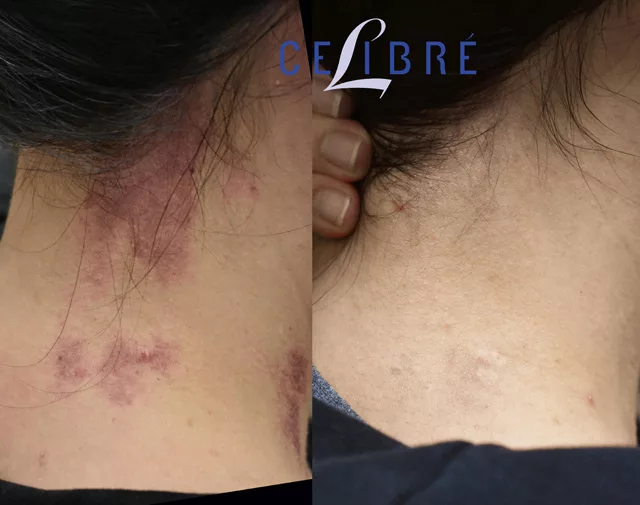










Port wine stains develop due to abnormal blood vessel formation near the skin’s surface. They can appear anywhere on the body, but are most common on the face, neck, arms, and legs.
Besides their visible appearance, these birthmarks can have emotional effects, especially when located on prominent areas like the face. Many patients pursue port wine stain removal to feel more comfortable and confident in their appearance.
Port wine stain laser treatment uses concentrated light beams from pulsed dye lasers (PDL), such as the Candela Vbeam, to target the blood vessels causing discoloration. The laser energy is absorbed by hemoglobin, causing the vessels to coagulate and collapse without harming surrounding skin.
During treatment, small blood vessels may burst, creating temporary maroon or purplish bruising. These bruises usually resolve within 7–10 days, revealing a more natural skin tone. PDL lasers emitting 585–590 nanometers remain the gold standard for port wine birthmark removal.
Most individuals with port wine stains are candidates for treatment. Before starting, a dermatologist or laser specialist evaluates:
Not all birthmarks are suitable for laser treatment, but many patients achieve significant fading or complete removal with proper evaluation.
During port wine stain laser treatment:
Patients often describe a snapping or stinging sensation. Treatment time depends on the size and location of the mark, typically lasting 10–30 minutes. Multiple sessions, spaced 4–6 weeks apart, are usually necessary to achieve optimal results.
After laser treatment, redness and bruising are normal and usually resolve in 7–10 days. Following post-treatment instructions helps with healing and reduces complications. Some patients may apply a thin layer of Vaseline or Aquaphor to soothe any flaking or crusting.
Results vary by individual. Some experience dramatic fading or near-complete removal, while others notice partial reduction in size or color intensity. Multiple sessions are often required for the best outcome.
While safe and effective, port wine stain laser treatment may involve:
Since 2000, pulsed dye laser treatment has transformed port wine stain removal, offering a safe and effective way to reduce birthmarks. While complete removal may not always be achievable, laser therapy can:
Consult a qualified healthcare professional to discuss expectations, risks, and the best approach for your individual case. With proper evaluation, treatment, and aftercare, port wine birthmark removal via laser can be life-changing.
Port wine stain removal uses port wine stain laser treatment to reduce or eliminate birthmarks. Pulsed dye lasers target blood vessels, causing them to collapse without damaging surrounding skin. Multiple sessions are usually required.
Most individuals with port wine stains can safely undergo laser treatment. A specialist evaluates the size, color, depth, and location of the birthmark to ensure suitability.
Patients may feel a snapping or stinging sensation, but topical anesthetics minimize discomfort. Post-treatment bruising resolves within 7–10 days.
The number of sessions depends on the birthmark’s size, density, and location. Treatments are typically spaced 4–6 weeks apart for best results.
Side effects are generally mild and temporary, including redness, bruising, or slight skin color changes. Hyperpigmentation is rare. Complete removal may not always be possible, especially for limb birthmarks.
Follow aftercare instructions, avoid sun exposure, and apply a thin layer of Vaseline or Aquaphor if flaking occurs. Redness and bruising usually fade within 7–10 days.
While treatment significantly reduces visibility, some marks may partially persist. Maintenance sessions may be recommended depending on individual results.
